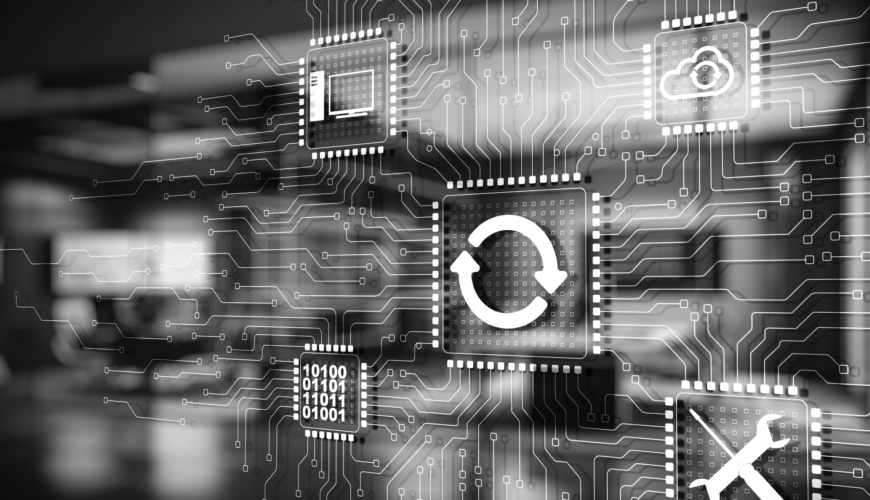The 4th Industrial Revolution, also known as Industry 4.0, is a period of rapid technological advancement characterized by the fusion of technologies that blur the lines between the physical, digital, and biological spheres. It is driven by disruptive trends such as the rise of data and connectivity, analytics, human-machine interaction, and improvements in robotics.
The rapid evolution of artificial intelligence (AI) is ushering in transformative changes across various sectors. Among the most significant advancements on the horizon are very large context windows, agents capable of developing code, and sophisticated text action capabilities. These innovations are not just incremental improvements; they represent fundamental shifts in how we interact with technology, develop software, and manage complex systems. Understanding the scale of their impact requires examining their implications in detail, including their effect on complex coding, the transition from human languages to digital commands, and the broader influence on supply chains knows as the 4th Industrial Revolution.
Key technologies driving the 4th Industrial Revolution include:
Very Large Context Windows: AI with Enhanced Short-Term Memory
Traditionally, AI systems have operated with limited context windows, restricting their ability to manage and recall extensive information during interactions. The advent of very large context windows represents a significant leap forward, enabling AI models to maintain a broader and more coherent understanding of ongoing dialogues or data streams. This expanded capacity is a form of advanced short-term memory, enhancing the AI’s ability to track and integrate information.
Impact on Human-AI Interaction
AI can now handle complex, multi-turn conversations with greater continuity, significantly improving user experience in customer service, virtual assistants, and interactive learning platforms. Tools for processing large documents or datasets will become more effective, streamlining research, legal reviews, and technical analysis. AI systems will offer more nuanced personalization by retaining and applying context from previous interactions, enhancing user engagement and satisfaction. These advancements are not just about technology, but about making your work easier, more efficient, and more user centric.
Agents for Code Development: Revolutionizing Software Creation
AI agents designed to develop code are set to revolutionize the software development lifecycle, sparking excitement for the future of programming. These agents use advanced machine learning models to write, optimize, and debug code, significantly altering the programming landscape.
Accelerated Complex Coding
AI agents can automate routine coding tasks, drastically reducing the time required for development. This acceleration allows developers to focus on high-level design and creative problem-solving. By handling repetitive or error-prone tasks, these agents improve code quality and reduce the likelihood of bugs, leading to more reliable software.
Accessibility and Collaboration
Non-experts can engage in software development more easily, democratizing access to coding and fostering innovation across diverse fields. AI agents act as intelligent collaborators, providing insights and suggestions that enhance human developers’ productivity and creativity.
Text Action Capabilities: Bridging Commands and Execution
Text action capabilities represent a significant shift from passive text interpretation to active execution based on textual commands. This technology enables AI systems to perform tasks directly from text inputs, such as sending emails, scheduling meetings, or generating reports.
Implications for Workflow Automation
Routine administrative tasks can be automated, improving efficiency and allowing users to focus on more strategic aspects of their work. As natural language commands are translated into actions seamlessly, systems become more responsive and adaptable to user needs.
Migration from Arbitrary Language to Digital Commands
The transition from conventional human languages to digital commands or code has far-reaching implications. Individuals may soon communicate directly using digital commands instead of interfacing with software through abstracted programming languages or user interfaces.
Impact on Development and Interaction
Users and developers will benefit from more intuitive ways to interact with systems, potentially reducing the learning curve associated with complex programming languages. This shift could democratize technology, allowing more people to use sophisticated systems without needing deep technical expertise.
Impact on Supply Chains
Integrating very large context windows, code-developing agents, and text action capabilities will profoundly impact supply chains, enhancing efficiency and adaptability.
Enhanced Visibility and Coordination
Large context windows allow for better tracking and integration of supply chain data, improving decision-making and responsiveness to disruptions. AI-driven agents can optimize logistics, manage inventory, and streamline procurement processes, reducing delays and minimizing costs.
Adaptive and Resilient Systems
AI’s real-time data processing and predictive analytics capabilities will enhance the ability to swiftly adapt to changes in demand or supply conditions. Improved visibility and automated response systems will help identify and mitigate potential risks more effectively.
The Broader Impact of 4th Industrial Revolution
Streamlined supply chains contribute to global efficiency, affecting everything from manufacturing to distribution and retail. Reduced operational costs and improved productivity can lead to economic gains across industries, potentially lowering consumer prices and increasing business profitability.
The impending availability of very large context windows, code-developing agents, and text action capabilities are hallmarks of the 4th Industrial Revolution. These advancements will revolutionize complex coding processes, simplify interactions through digital commands, and enhance supply chain efficiency. As these technologies mature and integrate into various sectors, they are poised to drive significant innovation, reshape how we work and interact with technology, and foster a more efficient and accessible digital landscape. The scale of their impact is vast, touching on numerous aspects of modern life and industry, paving the way for a more advanced and interconnected future.


